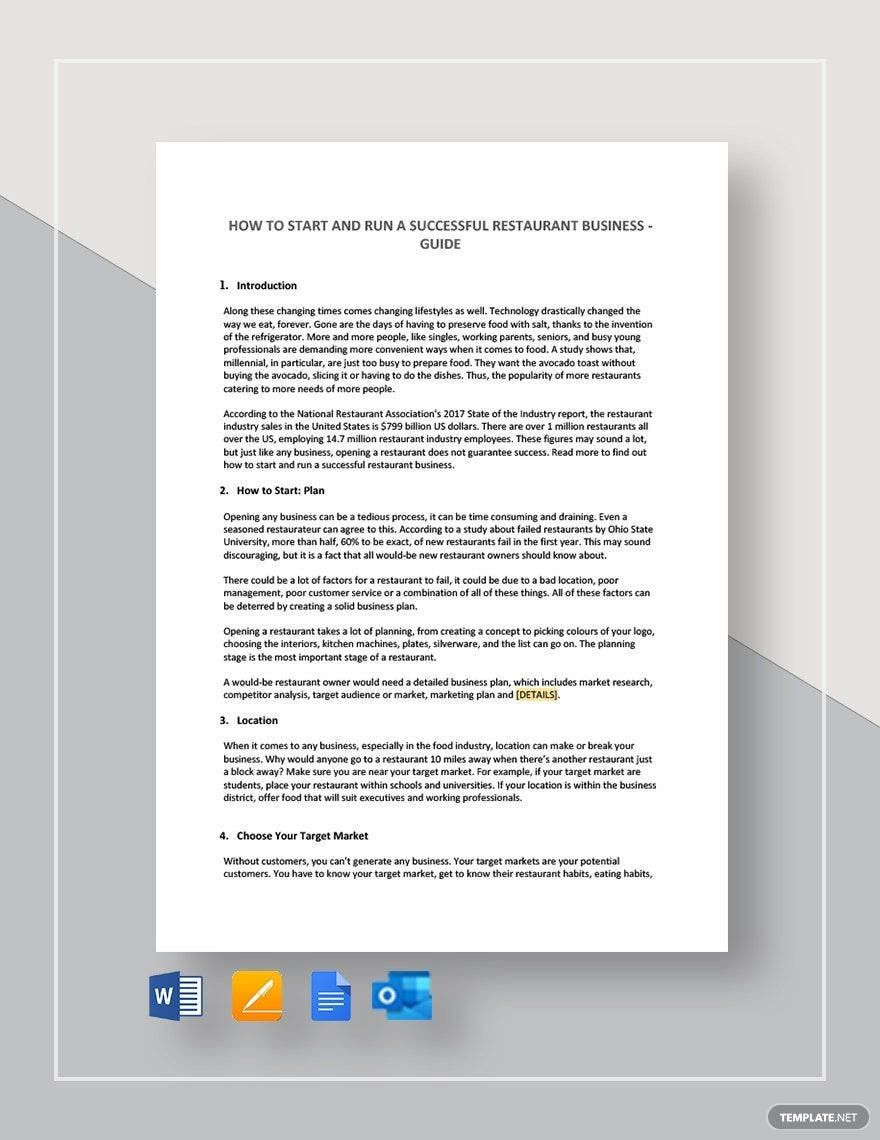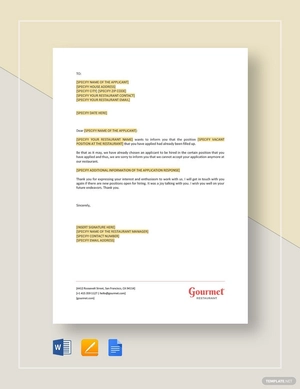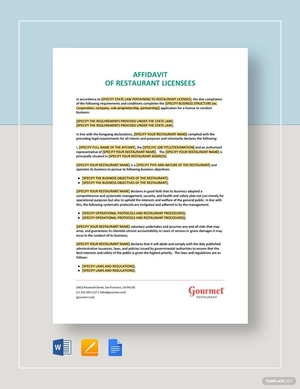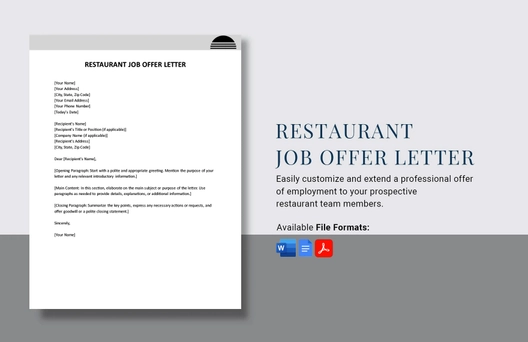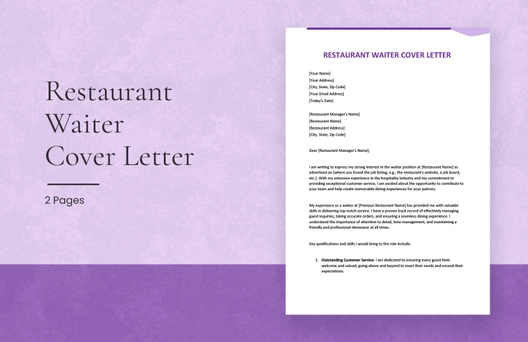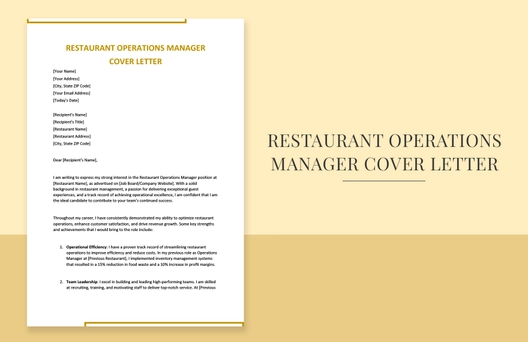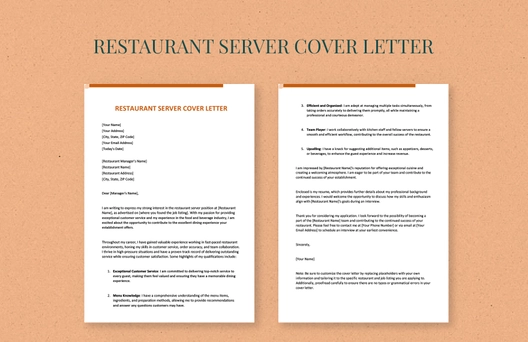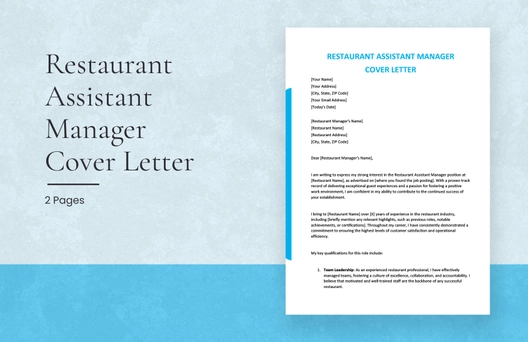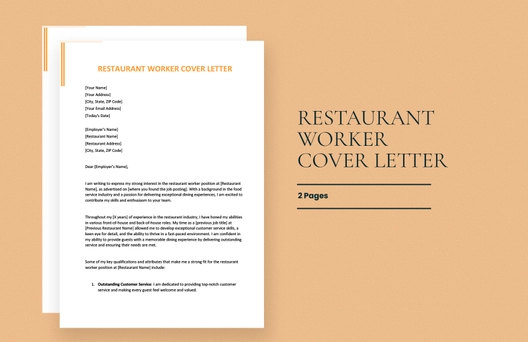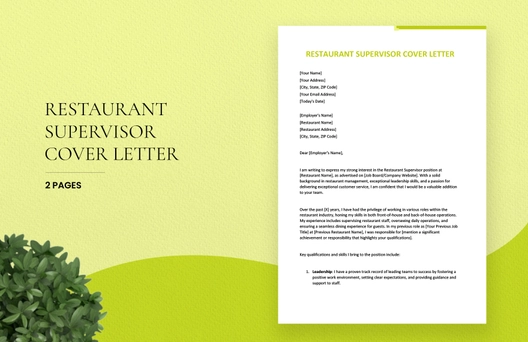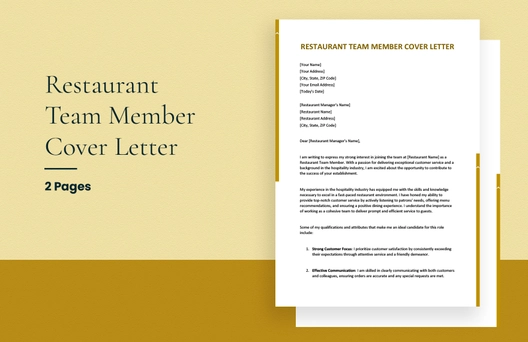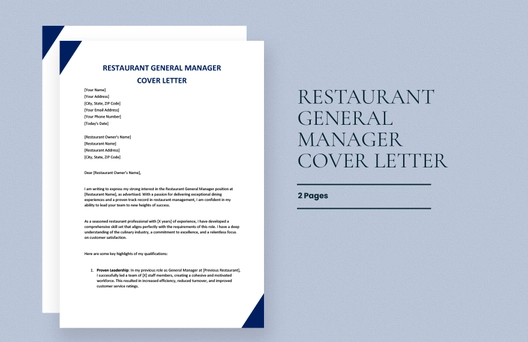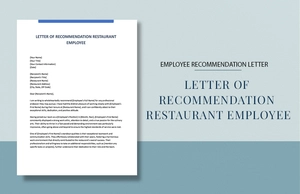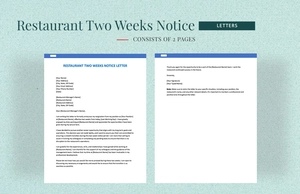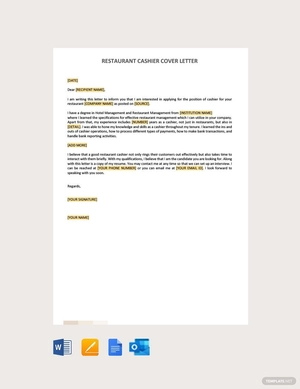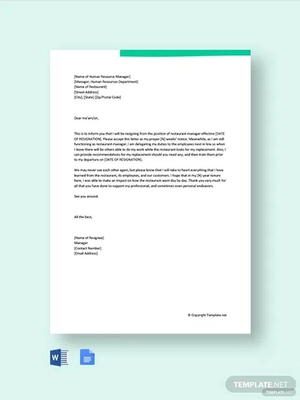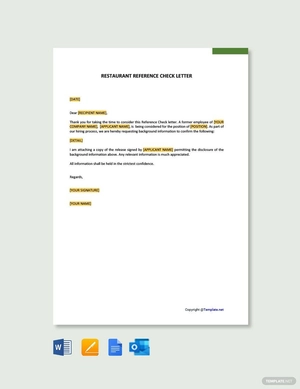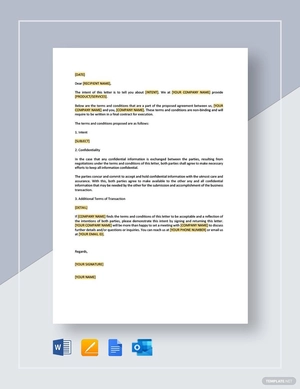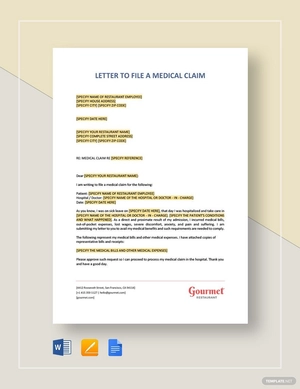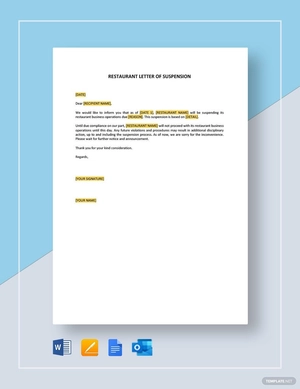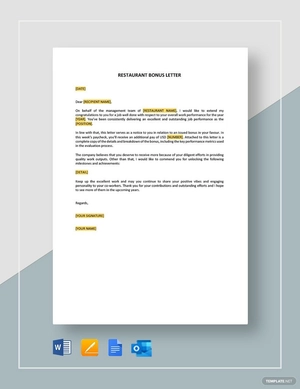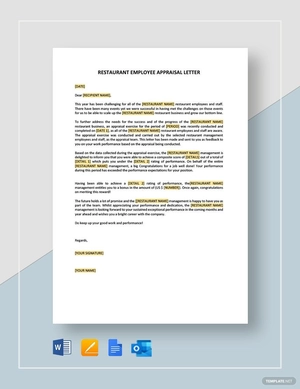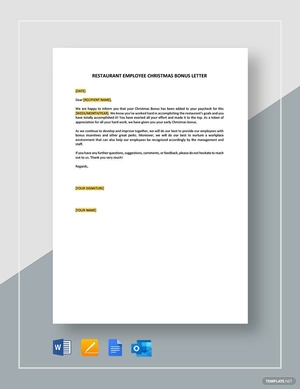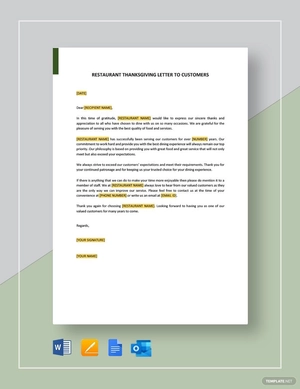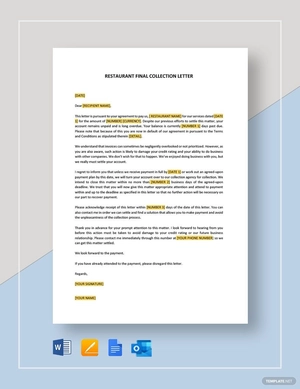How to Start and Run a Successful Restaurant Business - Guide Template
Download this How to Start and Run a Successful Restaurant Business - Guide Template Design in Word, Google Docs, PDF, Apple Pages Format. Easily Editable, Printable, Downloadable.
Are you looking to make a guide that would help new entrepreneurs who want to open their own restaurants? Then look no further and grab this How to Start and Run a Successful Restaurant Business – Guide template that you can download anytime, anywhere, at any device. This file is ready-made and easy to use. Create an effective, easy to understand guide to help restaurant owners in starting in their business endeavor. Apart from its simple yet effective design made with royalty free graphics, it also has well written suggestive content that you can either use as is or modify to fit your preferences. Grab this great deal while still available!
HOW TO START AND RUN A SUCCESSFUL RESTAURANT BUSINESS - GUIDE
Introduction
Along these changing times comes changing lifestyles as well. Technology drastically changed the way we eat, forever. Gone are the days of having to preserve food with salt, thanks to the invention of the refrigerator. More and more people, like singles, working parents, seniors, and busy young professionals are demanding more convenient ways when it comes to food. A study shows that, millennial, in particular, are just too busy to prepare food. They want the avocado toast without buying the avocado, slicing it or having to do the dishes. Thus, the popularity of more restaurants catering to more needs of more people.
According to the National Restaurant Association's 2017 State of the Industry report, the restaurant industry sales in the United States is $799 billion US dollars. There are over 1 million restaurants all over the US, employing 14.7 million restaurant industry employees. These figures may sound a lot, but just like any business, opening a restaurant does not guarantee success. Read more to find out how to start and run a successful restaurant business.
1. How to Start: Plan
Opening any business can be a tedious process, it can be time consuming and draining. Even a seasoned restaurateur can agree to this. According to a study about failed restaurants by Ohio State University, more than half, 60% to be exact, of new restaurants fail in the first year. This may sound discouraging, but it is a fact that all would-be new restaurant owners should know about.
There could be a lot of factors for a restaurant to fail, it could be due to a bad location, poor management, poor customer service or a combination of all of these things. All of these factors can be deterred by creating a solid business plan.
Opening a restaurant takes a lot of planning, from creating a concept to picking colours of your logo, choosing the interiors, kitchen machines, plates, silverware, and the list can go on. The planning stage is the most important stage of a restaurant.
A would-be restaurant owner would need a detailed business plan, which includes market research, competitor analysis, target audience or market, marketing plan and [DETAILS].
2. Location
When it comes to any business, especially in the food industry, location can make or break your business. Why would anyone go to a restaurant 10 miles away when there’s another restaurant just a block away? Make sure you are near your target market. For example, if your target market are students, place your restaurant within schools and universities. If your location is within the business district, offer food that will suit executives and working professionals.
3. Choose Your Target Market
Without customers, you can't generate any business. Your target markets are your potential customers. You have to know your target market, get to know their restaurant habits, eating habits, preferred food style, and other things that would appeal to them. In this way, you have more chances of turning potential customers to actual customers. Example target markets include:
- Geriatric population- Commonly known as seniors, the people in this group are aged 65 years and older. Majority of the seniors may not be able to afford fine dining restaurants and instead, opt for family-style restaurants. If this is your target market, place your restaurant in close proximity to where seniors are commonly found.
- Empty Nesters- These people are relatively younger compared to seniors, included are people in their fifth decade to mid-sixties. They typically have grown children who are no longer living at home. This is the wealthiest among the target markets, people in this group tend to dine in more upscale restaurants compared to any other age group. They tend to focus more on a restaurant’s service and food, regardless of the price tag.
- Baby Boomers- People in this group are typically born between 1940s and 1960s, where you can find wealthy professionals, making up the bulk of almost all restaurant diners. In one study, it was found out that younger people tend to dining out less than ever compared to baby boomers, despite the fact that almost all marketing efforts are targeted to the millennial. As a future restaurant owner, do not take baby boomers for granted.
- Generation X- People born between 1965 and 1980, who are estimated to be the people aged 36 and 52, belong to this group. Studies by the NPD Group, a leading global information company, show that people in this generation make up about 23% of all restaurant visits. To make your restaurant appeal to this group, offer a relaxing atmosphere, and food with great value for money.
- Generation Y or Millennial - To be considered a “Millennial” you have to born between
1980s to 2000s. It is not only the youngest of the target markets, but also the most diverse and the most in number- more than three times the size of its preceding generation, the Gen X. They are a prime target market for fast food establishments, burger shops and pizza parlours. If you want to target millennial, make sure your restaurant is trendy, “Instagrammable”, creative menu, and not too expensive. Millennial heavily use social media, so make sure you drive all marketing efforts using social platforms that millennial use every day such as Facebook, Instagram, Snapchat and Twitter. When you make your restaurant trend in these social platforms, you will have millennial lining up at your door.
4. Choose Your Restaurant Service Style
There are five primary restaurant categories: ethnic, fast food, fast casual, casual dining, family style and fine dining. By choosing a food concept, your potential customers would know in advance what to expect in your restaurant. For example, a person who would want to eat burgers would most likely go to a burger place, not a taco truck. Having a concept makes it easier to meet the needs of restaurateurs and potential customers alike.
Below you will find an overview of restaurant categories:
- Ethnic - These restaurants include but are not limited to: Italian, Chinese, Mexican, Indian, Thai, and Caribbean, English, French, German, Japanese, Korean, Mediterranean and Vietnamese restaurants. Some of these restaurants may have menus that may include Americanized versions of ethnic dishes.
- Fast food- As the name suggests, fast food means food prepared quickly. The menu consists mainly of burgers, hot dogs, steaks, French fries, fried onion, pizzas, sandwiches and soda.
- Fast casual- It is almost synonymous to fast food, except that the menu is more upscale and consists of better quality ingredients than those available in a typical fast food restaurant
- Casual dining- These types of restaurants provide table service, with moderately-priced food in a casual atmosphere. Casual dining restaurants typically have a full bar compared to fast casual restaurants.
- Family style- These family-friendly restaurants are a type of casual dining restaurant where diners serve themselves and the menu consists of food served in platters
- Fine dining- It is the highest priced type of all restaurant categories serving top quality food, attentive customer service and a more formal atmosphere with fine china, glassware and flatware. In fine dining restaurants, you can't find plastic, styrofoam or paper cups.
5. Be Unique
Stand out in the crowd. Say, you can't expect to sell your tacos when there are already ten taco trucks in the area. You probably have more chances of success if you’re the only taco restaurant in an area. You don't want to be one of those generic restaurants you see everywhere, you have to stand out among the restaurants in your area. Open in a city where a diverse group of people live, like New York City. A diverse city has diverse people, which means more target market for restaurant owners, too.
6. Be Ready for Failure
There is no guarantee in everything you do. Inevitably, you will always experience failure. For any business, there will always be failure. It could be small, like serving pork instead of beef, or could be huge as in closing your restaurant. What makes the difference is how you handle that failure. Instead of blaming your staff, yourself or some other people, find out about the root cause of any failure, instead of looking for someone to blame. From there, you can start doing something about it and prevent it from happening again. Refocus your efforts into something more productive, and create a plan of actions. Opening a restaurant is hard, it sure is a gamble, but if you are ready to fail, you have nothing to lose.
